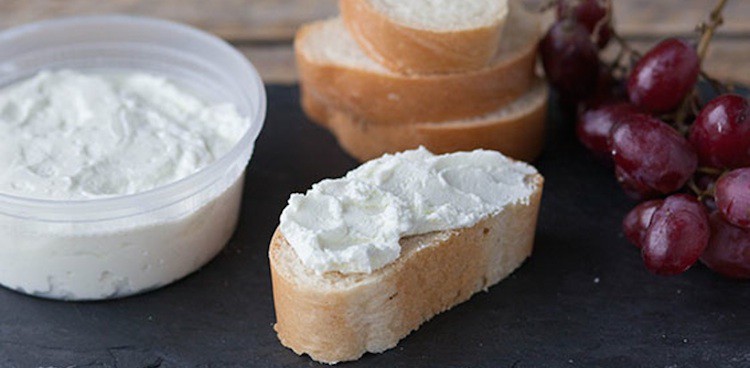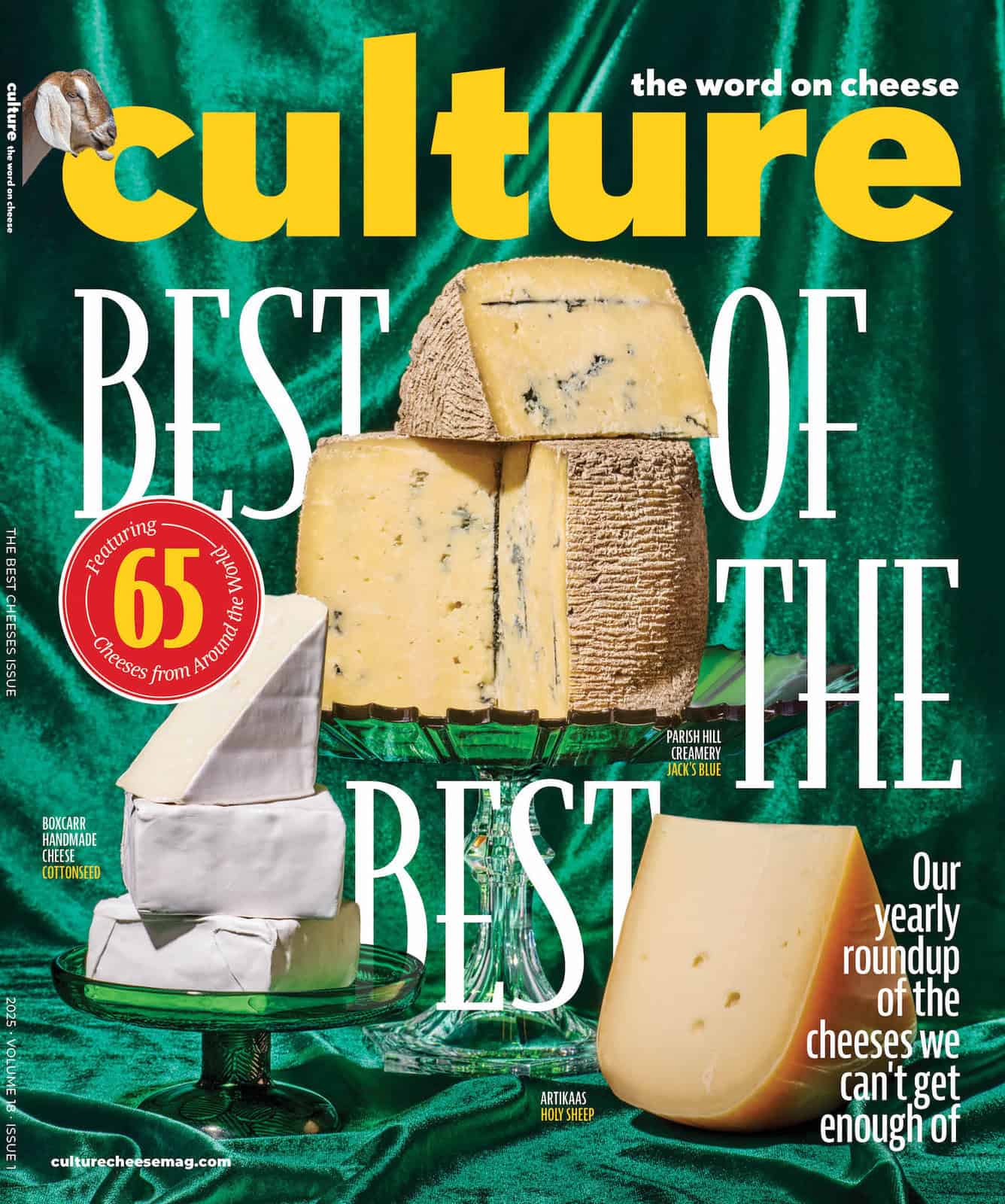
You see it everywhere. Layered with fruit in mason-jar parfaits. Sprinkled on pizza and baked just to the point of meltability. And, the contemporary Platonic ideal of all preparations – sliced into medallions, coated with breadcrumbs, popped in the oven, and then served over a bed of organic, farm-to-table arugula. I am talking, of course, about fresh goat cheese, otherwise known as chèvre, which looks a lot harder to pronounce than it actually is: Think “chevron” but without the “-on.” Or your best friend Bev, but with an “sh” instead of a “B.” Virtually unknown in the United States before the 1970s, this little goat’s milk cheese that could (and still does) has a history dating back over a thousand years and a level of current production numbering in the hundreds of millions of pounds annually. This is its story.
What is chèvre, exactly?
Fresh goat cheese is a relatively easy cheese to make, distinct in that it’s good to go almost as soon as the curds have coagulated: Goat’s milk is heated up, mixed with cultures and rennet, set aside to separate curds from whey, dusted with salt, sit some more, and voilà – fresh chèvre. While an infinite amount of subtle variations come into play to determine the exact flavor profile of a chèvre, the straightforward approach has made fresh goat cheese a go-to style for beginning cheesemakers and dairy farmers across the globe. In fact, the accessibility and universality of chèvre is so absolute that the name itself simply means “goat” in French; if you got goat’s milk, the etymology implies, obviously you’re going to make it into this style of cheese.
That sounds French. Why am I eating it in America?
Whoa, slow down, reader – the ubiquity of fresh goat cheese today owes much to both the new exchange of different cultures and a return to traditional, tried-and-true ways of doing things.
Goats were one of the first-ever animals to be domesticated by humans, and ever since humans figured out that you could make cheese, they surely had been crafting some sort of fresh goat cheese. But the style we know and love today can be traced back to the eighth century, when Moors from Spain were making incursions into France. The armies of the Umayyad Caliphate were doing more than just setting up an extremely symbolic clash between East and West; They were bringing along their goats to feed themselves. When the Umayyad expansion did not go particularly well, they got the hell out of Dodge… and left their goats behind.

Goats grazing in the Loire Valley of France. | Photo Credit: Image courtesy of David Lebovitz.
French farmers in the Loire River Valley started tending the goats, made cheese from their milk, and over a millennium built up a veritable chèvre empire: 70 percent of France’s goat cheese comes from the Loire, and France produces more goat cheese than any other country in the world (over 110,000 tons of the stuff in 2011).
Fast-forward to 1970s California, when a young Sonoma native by the name of Laura Chenel decided to go back to the land and raise goats. Chenel and her goat-herding friends produced way more milk than they could sell at market, so after several stints apprenticing with veteran cheesemakers in France, she returned to the Golden State and began making her creamy, tangy, white fresh goat’s milk cheese.
In 1981, a pioneering woman named Alice Waters was looking for a cheese for her little restaurant called Chez Panisse, and after trying Chenel’s seriously tasty stuff, she put in a weekly order of 50 pounds of goat cheese a week, to be famously rolled in breadcrumbs and served over baby greens for years to come. Chenel started focusing solely on chèvre, and today Laura Chenel’s Chèvre is one of the biggest names in American fresh goat cheese, having inspired dozens of producers to make their own versions.
And to come full circle, in 2006 Chenel sold her company to the Rians Group, a huge French cheese company, dedicated to preserving her cheese and her legacy.

A classic salad of roasted beets and chèvre over arugula. | Photo Credit: Image courtesy of Garnish with Lemon.
But why fresh goat cheese?
Are you serious, reader? I just told you that, a moment ago. But if I had to boil it down, I’d say because it’s just so darn versatile. There are a million and one ways to incorporate it into your cooking: as a pizza topping, on steak, in dips, in desserts, and on, and on. And it’s a dream to pair: most any white wine will go swimmingly with the simple integrity that is the fresh goat cheese, and wheat beers and Pilsners are beautiful alongside chèvre,
So the next time you’re wandering down the cheese aisle of your local market and pick up that cool log of chèvre, take a moment to reflect on its crazy ascension to its widespread popularity, and then devour immediately.
Photo Credit: Featured image courtesy of Good Eggs



